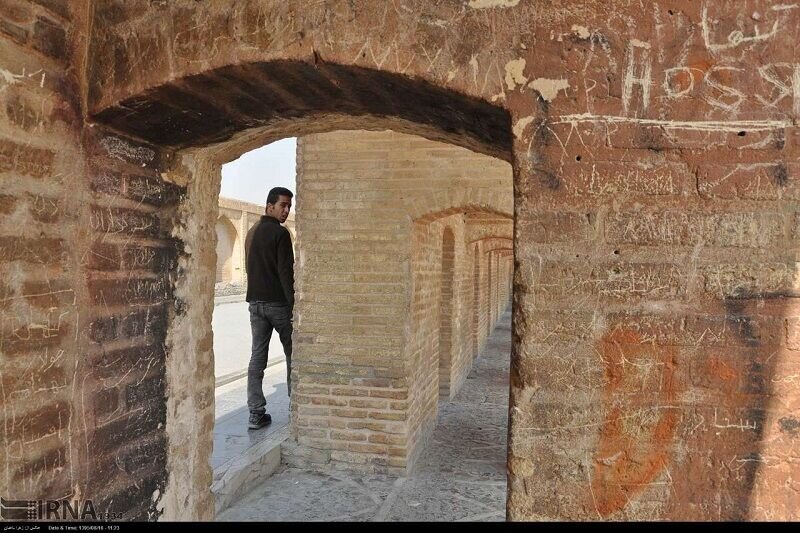Tehran-Si-oso-se Pol Cleanup was launched by the Isfahan Cultural Heritage, Tourism and Handicrafts Bureau, said Hadiarahiyari, who is responsible for overseeing the historic bridge in Isfahan.
He told the IRNA that cleaning up the writing of memoirs from the walls of Si-O-Se Pol began after Nowruz 1404 Holidays. Large specks have been removed from the walls of the bridge.
“To complete the cleanup, we aim to attract budgets from the Ministry of Cultural Heritage, Handicrafts and Tourism to work on a wider dimension.”
“To do the project, you need a great task force. Once the required credits are met, cleanup measures will begin in stages.”
He explained that a cleanup of the SI-O-SE Pol Bridge Deck will be implemented in the first phase, with the lower floors of the bridge being cleaned in the second phase, and the Khaju Bridge will be cleaned later.
He added that writing memoirs and writing slogans is cleaned every year from the historic bridges of Si-o-se Pol and Khaju.
He said cleaning of memoir writings is a time-consuming and delicate task. Instruments for writing memoirs, such as sprays and erasers, and for writing slogans, have changed the job more strongly, he added.
Arahiyari highlighted high walking traffic by passersby at the Si-o-se Pol, which links historic sites on both sides of the Zayande River, making it more susceptible to damage compared to other historic bridges in the city.
Famous as Isfahan’s longest historic bridge, Si-oo-se Pol is the largest water structure in Iran and is celebrated with 33 arches that form the first level. The second level features pedestrian passages sandwiched between walls and arcades, some of which are open to the surrounding scenery.
Isfahan is not only famous for its rich, great historic bridge, but also for its “river that brings to life.”
Soaked in a rich history, it was once the intersection of Iran’s international trade and diplomacy, but now for good reason it is one of Iran’s top tourist destinations.
The ancient city embraces many architectural wonders, including unparalleled Islamic buildings, museums, Persian gardens, and tree-lined paths.
Interestingly, Isfahan is called Nezuf e Jahan and is translated into “Half of the World.” During its heyday, it was one of the largest cities in the region and had a population of nearly 1 million.
KD

